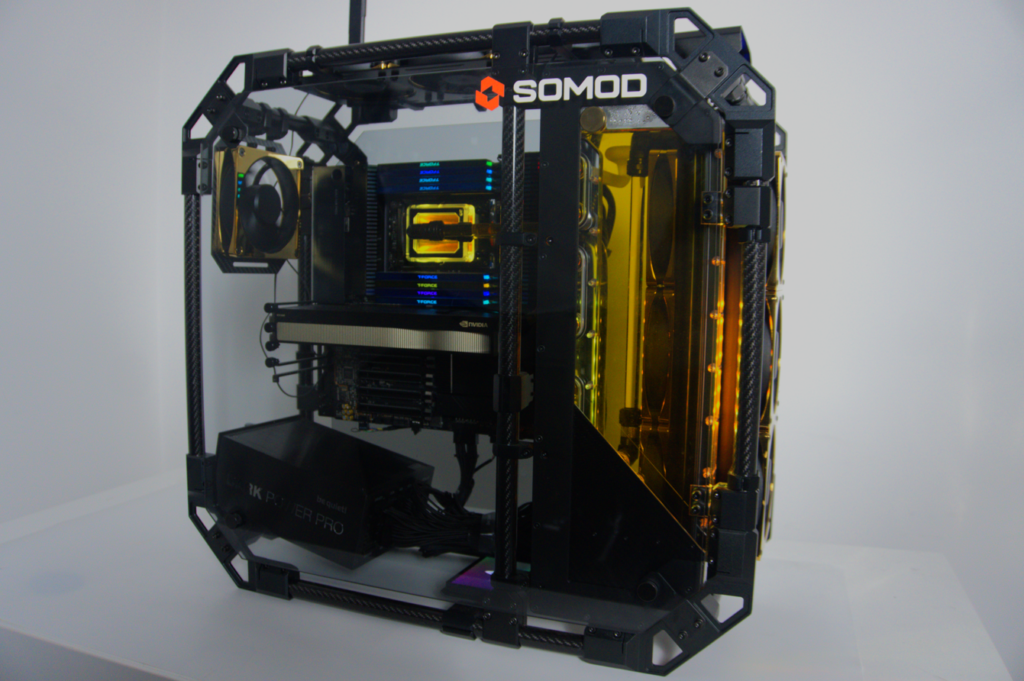As part of the launch of SOMOD PCs, the MBUZZ Labs team tasked me with benchmarking the new SOMOD Neural PC to evaluate its AI performance. Given the workstation’s powerful specs, I set out to test its deep learning capabilities using industry-standard benchmarks.
Initial Benchmarking Roadblocks
My initial plan was to run Geekbench AI, but I quickly hit a roadblock—it wasn’t detecting the GPU, making it unsuitable for proper evaluation. Next, I considered MLPerf, one of the most recognized AI benchmarking suites. However, downloading the massive datasets required for MLPerf benchmarks would have consumed significant bandwidth and time, so I decided to look for an alternative.
That’s when I stumbled upon PyTorch’s deep learning benchmark repository on GitHub. It provided a lightweight yet effective way to test AI workloads. I made modifications to the test files and adjusted batch sizes to optimize performance for the RTX 5880 Ada GPU. With these tweaks, I finally had a solid benchmarking setup.
Hardware Specifications of the SoMod Neural PC
Here’s the hardware that powers this AI workstation:
- CPU: AMD Ryzen Threadripper PRO 5955WX (16 Cores, 32 Threads)
- Memory: 256GB RAM
- GPU: NVIDIA RTX 5880 Ada Generation (49GB VRAM)
- NVIDIA Driver: 550.120
- CUDA Version: 12.6.77
- cuDNN: Latest version included in the CUDA toolkit
- Motherboard: ASUSTeK Pro WS WRX80E-SAGE SE WIFI
- Operating System: Ubuntu 22.04.5 LTS
- PyTorch Version: 2.5.0a0+e000cf0ad9.nv24.10
Deep Learning Benchmarks: Real-World Performance
After setting up the benchmarks, I tested various AI workloads to see how well the SoMod Neural PC handled them. Here’s what I found:
1. Object Detection – SSD (Single Shot MultiBox Detector) with ResNet50 Backbone on COCO Dataset
- AMP (Automatic Mixed Precision): 324 images per second
- FP32: 184 images per second
AMP provided a 1.75x performance boost, demonstrating real-time object detection capabilities.
2. NLP – BERT on SQuAD v1.1
- FP16 (with AMP): 237 sequences per second
- FP32: 134 sequences per second
AMP delivered a 40% speedup over FP32, making it ideal for language model training.
3. Neural Machine Translation – GNMT
- FP16 (with AMP): ~133,000 tokens per second
- FP32: ~82,000 tokens per second
AMP allowed for larger batch sizes and faster translation speeds.
4. Recommendation Systems – Neural Collaborative Filtering (NCF) on ML-20M Dataset
- FP16: ~22.1 million samples per second
- FP32: ~21.5 million samples per second
Both precisions performed similarly, showing that precision optimizations aren’t always necessary for recommendation models.
5. Image Classification – ResNet50 on Synthetic ImageNet Data
- AMP: 1,113 images per second
- FP32: 624 images per second
With nearly 2x the speed of FP32, AMP is the best choice for high-speed training.
Benchmark Results: The Numbers Speak for Themselves
| Model | Precision | Key Metric | Value | Notes |
|---|---|---|---|---|
| SSD (ResNet50 Backbone) | AMP | Images/Second | 324 | Real-time object detection capabilities. |
| SSD (ResNet50 Backbone) | FP32 | Images/Second | 184 | The FP32 precision result shows half performance if compared to AMP. |
| BERT (Base, SQuAD) | FP16 (with AMP) | Training Sequences/Second | 237 | |
| BERT (Base, SQuAD) | FP32 | Training Sequences/Second | 134 | 40% lower performance compared to FP16 with AMP. |
| GNMT (Translation) | FP16 (with AMP) | Tokens/Second (Training) | ~133,000 | Effective mixed precision allows larger batch sizes and faster runs. |
| GNMT (Translation) | FP32 | Tokens/Second (Training) | ~82,000 | |
| NCF (Recommendation) | FP16 | Training Samples/Second | ~22.1 Million | |
| NCF (Recommendation) | FP32 | Training Samples/Second | ~21.5 Million | Results nearly on par with its FP16 counterpart. |
| ResNet50 (ImageNet) | AMP | Images/Second | ~1113 | AMP provides nearly double the performance compared to FP32. |
| ResNet50 (ImageNet) | FP32 | Images/Second | ~624 |
Final Thoughts: Why the SoMod Neural PC is a Game Changer
🔹 AMP Optimizations Deliver Significant Speed Gains – Automatic Mixed Precision enhances performance without compromising accuracy.
🔹 High Memory Capacity – The 256GB RAM enables large batch sizes and efficient training.
🔹 Unrivaled AI Performance – The Threadripper PRO CPU + NVIDIA RTX 5880 Ada GPU combo ensures unmatched deep learning power.
🔹 AI-Ready Software Stack – With CUDA 12.6, cuDNN, and PyTorch optimizations, the system is future-proof for next-gen AI workloads.
Need a High-Performance AI Workstation?
If you’re looking for a powerful deep learning machine that can accelerate your AI workloads, the SoMod Neural PC is the ideal choice.
➡️ Order yours today at somodsystems.com and experience next-level AI computing! 🚀




